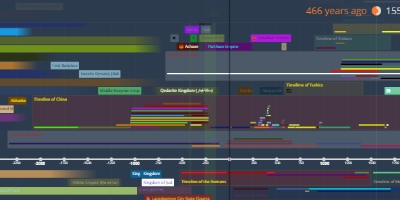Kingdom of León (Reinu de Llïón) (dec 10, 910 – sep 23, 1230)
Description:
The Kingdom of León (UK: /leɪˈɒn/, US: /-ˈoʊn/; Spanish: [leˈon]; Astur-Leonese: Reinu de Llïón; Spanish: Reino de León; Galician: Reino de León; Portuguese: Reino de Leão; Latin: Regnum Legionense; Mirandese: Reino de Lhion) was an independent kingdom situated in the northwest region of the Iberian Peninsula. It was founded in AD 910 when the Christian princes of Asturias along the northern coast of the peninsula shifted their capital from Oviedo to the city of León. The kings of León fought civil wars, wars against neighbouring kingdoms, and campaigns to repel invasions by both the Moors and the Vikings, all in order to protect their kingdom's changing fortunes.García is the first of the kings described by the charters as reigning in León. It is generally assumed that the old Asturian kingdom was divided among the three sons of Alfonso III of Asturias: García (León), Ordoño (Galicia) and Fruela (Asturias), as all three participated in the deposition of their father. When García died in 914, León went to Ordoño, who now ruled both León and Galicia as Ordoño II. At Ordoño's death in 924, the throne went to his brother Fruela II (924–5), who died of leprosy a year later. Fruela's death in 925 was followed by a civil war, after which Alfonso, the eldest son of Ordoño II, emerged as the new king Alfonso IV, ruling from 925–932. After a further power struggle, Ramiro, the younger brother of Alfonso IV, became king in 932, having captured his brother Alfonso, as well as the three sons of Fruela II – Alfonso, Ordoño and Ramiro. Alfonso IV may have died soon after, but he left two infant sons, called Ordoño and Fruela. When Ramiro died in 951, he left two sons by two different wives. When the elder son Ordoňo III, who ruled from 951–56, suddenly died aged little more than thirty, he was succeeded by his younger half-brother Sancho I "The Fat" (956–66), as Ordoño had failed to produce a legitimate heir.
Sancho's son Ramiro had been born in 961 and was only about five years old when his father died. He was also the only legitimate member of the direct family line. His mother Teresa Ansúrez had retired into the recently founded monastery of San Pelayo, of which her sister-in-law Elvira was the abbess. Another nun, Sancho's full sister Elvira Ramírez emerged as regent during his long minority. Under the regency of Elvira, fresh raids of the Northmen were repelled from the coast of Galicia. In 968, Gunrod of Norway, the Viking leader, established himself on Galician soil and held out for a year and a half: Bishop Sisnando of Compostela died fighting him, and his successor St Rudesind carried on the struggle until Count Gonzalo Sánchez defeated the invaders and killed Gunrod himself.[2] Count Sánchez destroyed the entire fleet of Gunrod. In 1008 Norman Vikings attacked Galicia, destroying Santiago de Compostela and seventeen other towns, while Olaf Haraldsson of Norway raided Spain's Atlantic coast.[3] There are also reports of a series of attacks on the Christian lands of north Spain in 1028, 1032, and 1038, and the Christian kingdoms in the north commonly used Vikings as mercenaries in their internecine wars.[4]
The County of Castile separated in 931, the County of Portugal separated to become the independent Kingdom of Portugal in 1139 and the eastern, inland part of León was joined to the Kingdom of Castile in 1230. From 1296 to 1301, the Kingdom of León was again independent and after the re-union with Castile remained a Crown until 1833, but as part of a united Spain from 1479. In the Royal Decree of 30 November 1833, the Kingdom of León was considered one of the Spanish regions and divided into the provinces of León, Zamora and Salamanca. In 1978, these three provinces of the region of León were included along with six provinces of the historic region of Old Castile to create the autonomous community of Castile and León. However, significant parts of the former kingdom today integrate these three provinces and the autonomous communities of Extremadura, Galicia and Asturias, in Spain, in addition to northern Portugal.
Added to timeline:
Date:
dec 10, 910
sep 23, 1230
~ 320 years
